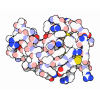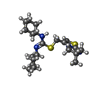登録情報 データベース : PDB / ID : 3oe9タイトル Crystal structure of the chemokine CXCR4 receptor in complex with a small molecule antagonist IT1t in P1 spacegroup C-X-C chemokine receptor type 4, Lysozyme Chimera キーワード / / / / / / / / / / / / / / / / / / / / / / / / / 機能・相同性 分子機能 ドメイン・相同性 構成要素
/ / / / / / / / / / / / / / / / / / / / / / / / / / / / / / / / / / / / / / / / / / / / / / / / / / / / / / / / / / / / / / / / / / / / / / / / / / / / / / / / / / / / / / / / / / / / / / / / / / / / / 生物種 Homo Sapiens (ヒト)手法 / / / 解像度 : 3.1 Å データ登録者 Wu, B. / Mol, C.D. / Han, G.W. / Katritch, V. / Chien, E.Y.T. / Liu, W. / Cherezov, V. / Stevens, R.C. / Accelerated Technologies Center for Gene to 3D Structure (ATCG3D) / GPCR Network (GPCR) ジャーナル : Science / 年 : 2010タイトル : Structures of the CXCR4 chemokine GPCR with small-molecule and cyclic peptide antagonists.著者 : Wu, B. / Chien, E.Y. / Mol, C.D. / Fenalti, G. / Liu, W. / Katritch, V. / Abagyan, R. / Brooun, A. / Wells, P. / Bi, F.C. / Hamel, D.J. / Kuhn, P. / Handel, T.M. / Cherezov, V. / Stevens, R.C. 履歴 登録 2010年8月12日 登録サイト / 処理サイト 改定 1.0 2010年10月27日 Provider / タイプ 改定 1.1 2011年7月13日 Group 改定 1.2 2012年5月2日 Group 改定 1.3 2017年7月26日 Group / Source and taxonomy / カテゴリ / software改定 1.4 2021年10月6日 Group / Derived calculationsカテゴリ database_2 / struct_conn ... database_2 / struct_conn / struct_ref_seq_dif / struct_site Item _database_2.pdbx_DOI / _database_2.pdbx_database_accession ... _database_2.pdbx_DOI / _database_2.pdbx_database_accession / _struct_conn.pdbx_leaving_atom_flag / _struct_ref_seq_dif.details / _struct_site.pdbx_auth_asym_id / _struct_site.pdbx_auth_comp_id / _struct_site.pdbx_auth_seq_id 改定 1.5 2024年10月9日 Group / Structure summaryカテゴリ chem_comp_atom / chem_comp_bond ... chem_comp_atom / chem_comp_bond / pdbx_entry_details / pdbx_modification_feature Item
すべて表示 表示を減らす
 データを開く
データを開く 基本情報
基本情報 要素
要素 キーワード
キーワード 機能・相同性情報
機能・相同性情報 Homo Sapiens (ヒト)
Homo Sapiens (ヒト) Enterobacteria phage T4 (ファージ)
Enterobacteria phage T4 (ファージ) X線回折 /
X線回折 /  シンクロトロン /
シンクロトロン /  分子置換 / 解像度: 3.1 Å
分子置換 / 解像度: 3.1 Å  データ登録者
データ登録者 引用
引用 ジャーナル: Science / 年: 2010
ジャーナル: Science / 年: 2010 構造の表示
構造の表示 Molmil
Molmil Jmol/JSmol
Jmol/JSmol ダウンロードとリンク
ダウンロードとリンク ダウンロード
ダウンロード 3oe9.cif.gz
3oe9.cif.gz PDBx/mmCIF形式
PDBx/mmCIF形式 pdb3oe9.ent.gz
pdb3oe9.ent.gz PDB形式
PDB形式 3oe9.json.gz
3oe9.json.gz PDBx/mmJSON形式
PDBx/mmJSON形式 その他のダウンロード
その他のダウンロード 3oe9_validation.pdf.gz
3oe9_validation.pdf.gz wwPDB検証レポート
wwPDB検証レポート 3oe9_full_validation.pdf.gz
3oe9_full_validation.pdf.gz 3oe9_validation.xml.gz
3oe9_validation.xml.gz 3oe9_validation.cif.gz
3oe9_validation.cif.gz https://data.pdbj.org/pub/pdb/validation_reports/oe/3oe9
https://data.pdbj.org/pub/pdb/validation_reports/oe/3oe9 ftp://data.pdbj.org/pub/pdb/validation_reports/oe/3oe9
ftp://data.pdbj.org/pub/pdb/validation_reports/oe/3oe9 リンク
リンク 集合体
集合体
 要素
要素 Homo Sapiens (ヒト), (組換発現)
Homo Sapiens (ヒト), (組換発現)  Enterobacteria phage T4 (ファージ)
Enterobacteria phage T4 (ファージ)
 X線回折 / 使用した結晶の数: 9
X線回折 / 使用した結晶の数: 9  試料調製
試料調製 シンクロトロン / サイト:
シンクロトロン / サイト:  APS
APS  / ビームライン: 23-ID-D / 波長: 1.033 Å
/ ビームライン: 23-ID-D / 波長: 1.033 Å 解析
解析 分子置換 / 解像度: 3.1→19.92 Å / Cor.coef. Fo:Fc: 0.8941 / Cor.coef. Fo:Fc free: 0.8834 / 交差検証法: THROUGHOUT / σ(F): 0 / 立体化学のターゲット値: Engh & Huber
分子置換 / 解像度: 3.1→19.92 Å / Cor.coef. Fo:Fc: 0.8941 / Cor.coef. Fo:Fc free: 0.8834 / 交差検証法: THROUGHOUT / σ(F): 0 / 立体化学のターゲット値: Engh & Huber ムービー
ムービー コントローラー
コントローラー



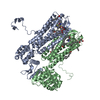
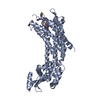
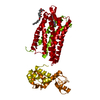
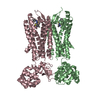



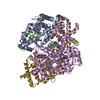
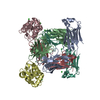

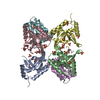

 PDBj
PDBj